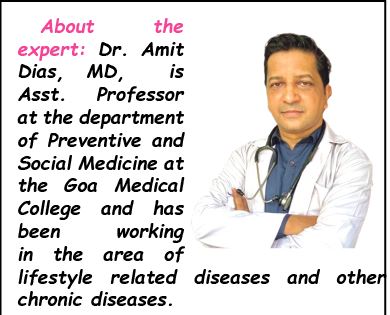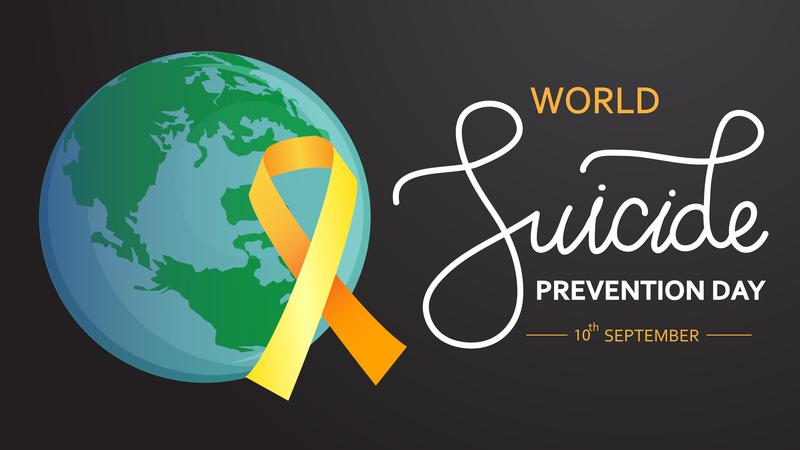SEPTEMBER 10 is World Suicide Prevention Day and we at the Goan Observer feel it is important to bring hope into the lives of those who have reached a stage in their life when they constantly think what is the point of living in a depressing world. Life ceases to have any meaning for them as sadness and depression assails them because of a myriad problems they face which could be economic or social or just the hardships of growing old and constantly in ill-health with nobody around to cheer them up. This is when thoughts of suicide come to mind! We caught up with DR AMIT DIAS from the Department of Preventive & Social Medicine to enlighten us on how we can help one another on this sensitive issue. “We need to recognize the signs of an impending suicide, and reach out to the people in distress,” he explains in this informative interview. “We need to create hope through action.”
Goan Observer: Doctor, we often hear about people committing suicide, how big is the problem?
Dr Amit Dias: Yes, it has become an epidemic. It’s sad to see that people young and old are feeling hopeless and uncared for. One can never say who may be the next target of this unfortunate decision. It is estimated that there are around 7 lakh suicides every year and we know that each suicide profoundly impacts many more people. Those who commit suicide, die once, but those who are left behind die a thousand deaths, remembering those terrible moments and missed opportunities of making a difference for the better for somebody.
It’s also startling to note that suicide is the fourth leading cause of death in the youth aged 15-29 years. In India itself, we have around 12 deaths due to suicide per lakh population every year. On Suicide Prevention Day at least there should be campaigns to make people aware that depression is treatable, suicide can be prevented, and we all have a role to play in bringing hope to humanity.
Q: How do we tackle it? What are the signs to recognize a person contemplating suicide?
A: Tackling the complexity of suicidal behavior starts with identifying the risks and protective factors. It can happen to anyone. Sometimes it can come without any warning and we need to build resilience in all and make help accessible. Just a phone call can help them change the fatal decision.
Here are some of the warning signs of those at risk:
• Those who talk about wanting to die or kill themselves — do not take them lightly.
• Those experiencing unbearable emotional or physical pain.
• Those who feel they are a burden to others.
• Those who say they feel hopeless, empty, and feel it’s pointless to live.
• Those who say they feel trapped or feel that there are no solutions to their problems.
• Those in a narcissistic relationship – at work or at home.
• Those who withdraw from family and friends.
• Those who suddenly give away important possessions, put affairs in order.
• Those who say goodbye to friends and family.
• Those who take risks that could lead to death, such as driving extremely fast.
• Those who often talk about death.
• Those found to be searching for lethal methods online, collecting and stocking pills, buying a gun.
• Talking about feeling great guilt or shame.
• Using alcohol or drugs more often.
• Acting anxious or agitated.
• Changing eating or sleeping habits.
• Those with a history of suicide attempts or a family history of suicide.
• Those exposed to family violence, including physical or sexual abuse.
• Those exposed to others’ suicidal behavior, such as that of family members, peers, or celebrities.
Q: Does all this mean that people who have such thoughts will attempt to end their life?
A: No, remember, most people who have risk factors for suicide will not attempt suicide, and it is difficult to tell who will act on suicidal thoughts. All that I am saying is that it is important to recognize these risk factors as they may be at higher risk and need immediate attention. Men are more likely to commit suicide and people in the LGBTQ community are found to be more vulnerable. There are several other factors — poverty, conflict, disaster, war, broken relationships, legal and financial problems, bullying, ragging, failure in exams, etc, that can make a person vulnerable to thoughts of committing suicide as a way out of putting an end to living itself.
Q: What can we do if we know someone is having suicidal thoughts?
A: If someone tells you that they are going to kill themselves, do not take it lightly. Confide in a trusted friend, family member, or others in the family or friends. We may sometimes see such messages on social media. Do not underestimate the magical power of talking to someone. You can bring out a person from a hopeless state of mental anguish or desperation. Take cognizance of it and reach out to the person you may know well or even not to well. Help them seek help and speak to a counselor, psychiatrist or family doctor. If the person is depressed, medication is available. There are alternatives to suicide and through our action, we can encourage the person to take a new path and save their life and be happy again.
Q: What are the therapies available?
A: Several evidence-based measures are now available. Commonly, we use cognitive behavior therapy (CBT). It is a type of psychotherapy that helps people learn new ways of dealing with stressful experiences. We use this with caregivers of people with dementia who experience burnout and often have suicidal ideation. CBT helps people learn to recognize their thought patterns and consider alternative actions when thoughts of suicide arise.
A therapist can help people recognize when their feelings or actions are disruptive or unhealthy and teach them personal skills that can help them cope more effectively with catastrophic situations. It often needs a collaborative effort with the primary health care provider, mental health specialist family member, and social support.
Sometimes just speaking to a friend in a non-judgmental environment can make a world of difference. Suicide prevention helplines are available and come in handy for brief intervention to tide over a crisis.
Q: Can asking someone about suicidal ideation, put the idea in their head?
A: No. That is a myth. Studies have shown that asking people about suicidal thoughts and behavior does not cause or increase such thoughts. Asking someone directly, “Are you thinking of killing yourself?” can be the best way to identify someone at risk for suicide.
Q: What is your message to our readers?
A: Suicide prevention is a public health priority. By creating hope through action we can reach out to those who are experiencing suicidal thoughts that help is available, no matter how distressing the situation may be …. there is always hope. Next time you want to express your love for someone, don’t say, you will die for them, instead say that you will live for them. There is a lot of stigma and myths that surround suicide and we need to overcome it and be ready to talk and take action to instill hope in the minds of people to save lives.

